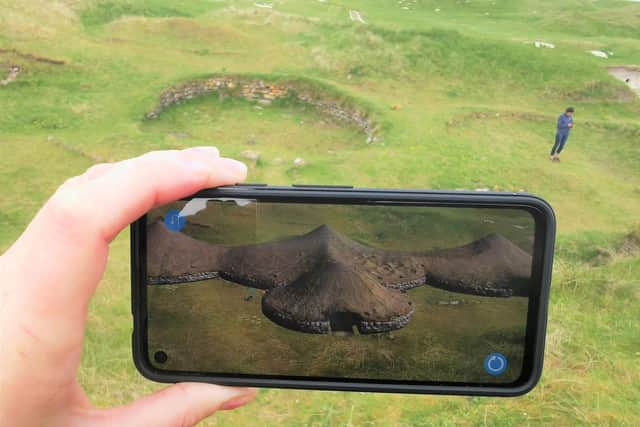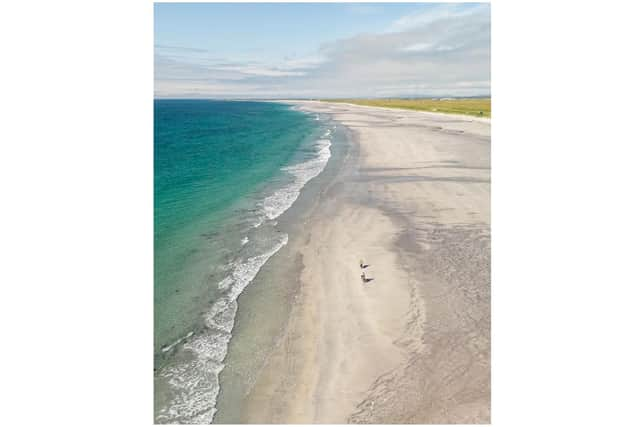Time for Uist: Unearth the gems of a Scottish Hebridean idyll packed with heritage, Gaelic culture and superb food and drink
Time slows and expands here in Uist, making an hour seem like two and a week away like an immersion in somewhere that moves to its own beat.
Quickly, the demands of the clock unwind as the island, with its long-running timelines and proudly unbroken Gaelic traditions, sets its own pace. You’ll find an island where the past is embedded in every track and turning and its present and future set in fresh ideas and new enterprise as its people, the Duchais, as they have forever done, dig in, evolve and survive while sharing what is dear and true to them.
New distilleries for whisky and gin; street food made from island meats and flavours; warm hospitality with a modern feel and croft tours which unfold generations of knowledge are part of the picture here to meet the needs of today’s traveller, as are boat tours to off-radar beaches and walking explorations of places held close to those who call the island home.


Architecture of the old and new combine in a landscape that flits between the heavenly, the worked, the abandoned and the militarised while archaeology bores right down into the island’s often hidden yet startling narrative of life forged here over thousands of years. From the sites of Bronze Age mummies to Viking settlements and grand clan halls where feasts of the Lord of the Isles were sometimes served with an extra course of bloodshed, all can be found here if you can slow yourself down and take time to discover.
For many a visitor to this part of the world, all roads lead to the beach and it is true there is a special joy to hold as the clouds clear, the blue skies deepen and the clear water and white sands illuminate in the most otherworldly mix of colour and light. If time moves differently in Uist, it could well be that it stops altogether in these seconds when extreme natural beauty shows itself on the beaches of the west coast.
But as people seek out these spots for a shot of tranquility, a sense of space and photographs of the moment, there is a risk that the rich, authentic stories that really crack open island life fall to the wind leaving rewards unclaimed, truths unnoticed and a deeper sense of place unventured.
The A865 is the main artery that cuts through the island from north to south but in the circulatory system of Uist, it is what lies off the modern, main route – a road that rises and falls over the waterways and lochans that once served as a type of canal system connecting homes to sea – where much of the island’s life story can be found.


Take Bornais, for example, a settlement on the west of South Uist. You won’t see it at first but in the wide-open blanket of gorgeous machair that runs off the beach, the outline of a major Viking settlement, where some 20 buildings once stood, gently pushes up through the ground. Today, this site sits silent apart from the chirps and calls of the island’s busy bird life and perhaps the rumble of a tractor collecting seaweed from the nearby sands, but once it boomed with trade, activity and a population who gathered around the hall of an important Norse ruler, where hearths were lit and feasts cooked and consumed.
An evening walk here among the oyster catchers, curlews and redshanks takes you to another place forged more than one thousand years ago, where the ways of the ancient suddenly fill the air and the land feels far from empty as past life raises like a powerful spectre. If some holidays are about getting away from it all, in Uist you can be taken up close to who and what came before this modern world from which we take a break, in what feels like a very personal trip of discovery. You may well return home a little different.
There are numerous active and dedicated heritage and history societies in Uist – including those in Berneray, Grimsay, North Uist, Eriskay and South Uist - who work to keep these stories alive and where islanders share their research, collections and archives of those who left and those who remained among the ever changing. These community-run enterprises include the excellent Berneray Historical Society and the Kildonan Museum, which sits just a short distance from Flora MacDonald’s birthplace, includes a prominent Jacobite section of local heroes and locations important to the cause.
With history and genealogy a growing call to visitors, one recent innovation to emerge is the Uist Unearthed app which offers a virtual archaeological exploration of the sites that remain broadly hidden from view. Unlike the big hitting upstanding monuments of Orkney, for example, they remain largely below ground but sit with equal international significance.
Using the app, these sites appear in full reconstructed view while standing on the spots where they were built and come to life using the powerful combination of augmented reality, GPS and archaeological data. Stand at the Norse settlement at Bornais and that hall of the Viking lord appears on the screen of your smartphone in front of you, As you move, you walk through doors, moving your body to fit with faithfully reconstructed space and dimensions and into a room where the fire crackles, smoke rises and fur rugs line the seats. The ambient sounds of crashing waves filters through.
The app, in a few presses of your phone screen, unpacks in quick time a different, extremely powerful view of the island when the machair was once home to large numbers of people.
Dr Rebecca Rennell, a lecturer in archaeology at UHI Outer Hebrides and Uist Virtual Archaeology Project Manager, said: “The assumption for many is that the islands are quite remote and they don’t have a massive population now but in prehistory, that was probably not the case.”
At Cladh Hallan, a Bronze Age settlement made famous by its prehistoric mummies, the only place in Great Britain where they have been found, users of Uist Unearthed crouch down to enter one of the roundhouses. On the right, as the app guides you into the building where the mummies were found, you’ll see a tiny gold ring on the floor, which was possibly used as a hair ornament. There it lies, exactly in the spot it was found by archaeologists.
Dr Rennell added: “This was a really central place, there is a lot of activity here and they would have been really busy places. For most people they think this is quiet and remote, nothing probably happened here but in fact here, nestled in the dunes is a site where not only all this business but some exceptional things were happening.”
Today, only one or two dog walkers are seen making their way over the dunes. Four thousand years ago, this place would have been bustling, heaving with people, children and dogs, smelly and smoky. In Uist, the back story shifts perception of the islands as you find them today.
Uist pushes on, develops and looks to thrive as the Outer Hebrides courts soaring popularity. Young islanders, such as Kate MacDonald and Jonny Ingledew, co-founders of North Uist Distillery and Downpour Gin in Benbecula, are preparing to expand their business with a new whisky distillery – where the drams will be made from locally-grown bere barley – planned for their site at Nunton Steadings. At Croft and Cuan in Lochboisdale, sisters Christina and Samantha, who set up their business during lockdown, prepare to grow with their food truck now a welcome sight at festivals and weddings across the islands. Down in Eriskay, David Steele, who moved away to Glasgow for four years, is back home and running Uist Sea Tours taking visitors to those coveted, lesser-known islands and beaches on his covered RIB boat.
Meanwhile on the more mountainous east side of South Uist at Loch Skipport, which was once the main harbour on the island before the boats got too big, crofting tours are launched by DJ Cameron of Long Island Retreats, a 6th generation crofter who left his job in the oil industry to keep traditions of the land alive. It feels as if he knows every inch, every story of this place and all the people in it too as he takes you into the real, grafting side of island life - away from the beaches, the photographs and the fleeting moments - to a day among his cattle, his ponies and the ways of keeping the land that have sustained his family for decades. With people like DJ and the others to guide you, you’ll get closer to Uist’s true, rare rhythm just that little bit more.